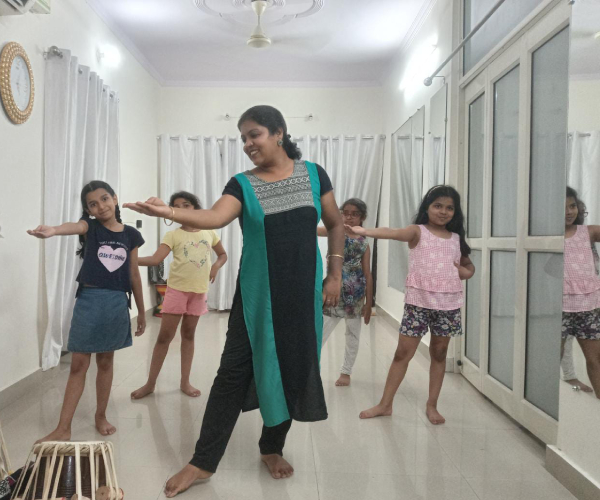(For All Age Group)
Kuchipudi
Kuchipudi is a classical dance form that originated in the southern Indian state of Andhra Pradesh. It derives its name from the village of Kuchipudi, where it was developed as a traditional dance-drama art form. Kuchipudi is known for its vibrant and dynamic movements, intricate footwork, expressive gestures, and use of storytelling elements.
The origins of Kuchipudi can be traced back to the 17th century when it was performed exclusively by men belonging to the Brahmin community. However, in the 20th century, women also began to participate and excel in this dance form. Kuchipudi draws inspiration from various sources, including classical Sanskrit texts, mythology, folklore, and social themes.
One of the distinctive features of Kuchipudi is the Tarangam, a unique segment in which the dancer performs rhythmic patterns while balancing on the edges of a brass plate. This challenging feat showcases the dancer’s skill, agility, and control over body movements.











Kuchipudi performances typically involve a combination of pure dance (Nritta) and expressive storytelling (Natya). The Nritta aspect includes intricate footwork, swift movements, and rhythmic patterns set to complex rhythms. The Natya aspect involves the portrayal of characters, emotions, and stories through facial expressions, hand gestures (mudras), and body movements.
Kuchipudi dancers often wear colorful costumes and elaborate jewelry. The male dancers usually wear a dhoti (traditional garment) with a long, pleated cloth tucked into the waist, along with a shirt or vest. The female dancers wear a sari with pleats in the front and a richly embellished blouse.
The accompanying music for Kuchipudi is usually Carnatic classical music, with instruments like the mridangam (double-sided drum), violin, flute, and veena. The dancers perform to the melodic and rhythmic compositions, enhancing the overall aesthetic experience of the performance.
Kuchipudi has gained recognition and popularity both in India and on the international stage. Many renowned Kuchipudi dancers have contributed to its preservation and innovation, blending traditional elements with contemporary themes and techniques.
In conclusion, Kuchipudi is a vibrant and expressive classical dance form that showcases the rich cultural heritage of Andhra Pradesh. With its intricate footwork, expressive gestures, and captivating storytelling, Kuchipudi continues to enchant audiences worldwide.
